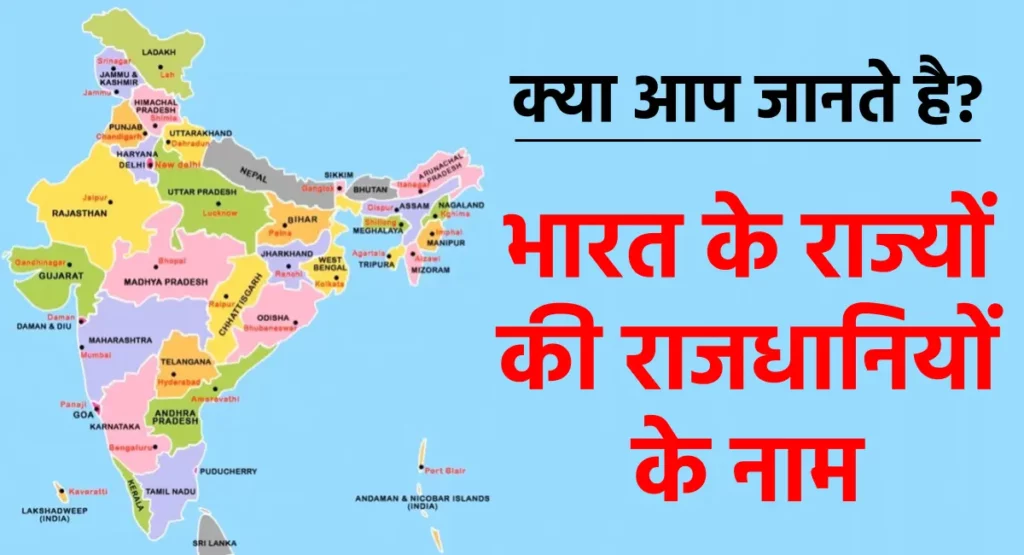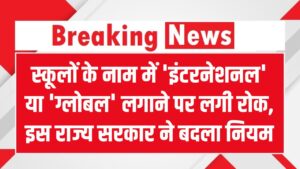India is a huge country with over 1.3 billion population, where do you think this population resides? Correct! In our states and capitals. Now how well do you think you know about these states and capitals? Let’s find out by giving a short yet informative quiz curated around them.

States and Capitals Gk Quiz
Our country consists of a total of 28 States and Eight Union Territories, where people of different cultures, customs and religions leaving aside some exceptions live in peace and harmony. These places are home to many cultural and historical treasures that offer insights into the nation’s rich heritage and the stories of its past.
Every state has a story of its own to tell about the historical events taken place from multiple invasions to technological advancements. Their natural habitat consists of diverse flora and fauna with varied climates and landscapes. From the Western Ghats to the Aired Thar Desert to the Himalayas to the main grassland and plains its diversity ceases to amaze.
Throughout a large sum of period, human activities like urbanisation and advanced agriculture have shaped it differently than it used to be. To learn and find your level of knowledge around states and capitals, the following article will help you enhance and access:
[–MCQ-QUESTIONS-DISPLAY–]
What is a State?
A State in a geographical and geopolitical context refers to a defined territory or area that is governed by an authority of its own. They can make their own rules and regulations and make amendments to the pre-existing ones without interfering with the personal matter of other states.
After India gained its Freedom, the reorganization of states started to happen. Linguistic, Social and Cultural differences were taken into account before assigning a state to a specific population. Moreover, certain administrative factors like the efficiency of the administration, decentralisation of governance, Resource Allocation, Administrative boundaries etc and geographical factors like Natural Boundaries, Proximity, Cultural Identity and access to resources were also carefully articulated.
States and Union Territories of India
| States | Union Territories |
| Andhra Pradesh | Andaman and Nicobar Islands |
| Arunachal Pradesh | Chandigarh |
| Assam | Dadra and Nagar Haveli |
| Bihar | Lakshadweep |
| Chhattisgarh | Delhi (NCT) |
| Goa | Pondicherry |
| Gujarat | Daman and Diu |
| Haryana | Jammu and Kashmir |
| Himachal Pradesh | |
| Jharkhand | |
| Karnataka | |
| Kerala | |
| Madhya Pradesh | |
| Maharashtra | |
| Manipur | |
| Meghalaya | |
| Mizoram | |
| Nagaland | |
| Odisha | |
| Punjab | |
| Rajasthan | |
| Sikkim | |
| Tamil Nadu | |
| Telangana | |
| Tripura | |
| Uttar Pradesh | |
| Uttarakhand | |
| West Bengal |
Geographical, Cultural and Linguistic Diversity of Indian States
India is known for its diversified beauty in many different domains be it Geography, Culture, Tradition, Languages, Religion etc. Geographically speaking it holds numerous records for having the most no. of landforms from the Himalayan Range to the Thar desert. This diversification of land from place to place can be one of the major reasons that resulted in the division of people into different ethnic groups. These groups can further have differences in them for example Dravidians are the people who primarily live in the southern part of India these people speak languages like Tamil, Telegu, Kannada and Malayalam. These also have their own cultural and linguistic heritage. Another Example is Mongoloids people who reside in the North-East part of India including communities like Assamese, Bodo, Manipuri and Naga people.
Despite each state being home to various cultural diversification, there are certain ethnic groups prevalent in them. Following we have listed different states having different ethnicities along with linguistic diversity:
| States/Union Territories | Languages Spoken | Different Ethnic Groups Present |
| Uttar Pradesh | Hindi (official language), Urdu, Awadhi, Bhojpuri, Bundeli | Indo-Aryans, Dalits, Brahmins, Yadavs, Jats, Thakurs, Muslims, Sikhs, Buddhists |
| Maharashtra | Marathi (official language), Konkani, Gujarati, Urdu | Marathis, Dalits, Brahmins, Kunbis, Muslims, Buddhists, Jains |
| Kerala | Malayalam (official language), English, Tamil, Konkani | Malayalis, Christians, Muslims, Nairs, Ezhavas |
| Punjab | Punjabi (official language), Hindi, Urdu, English | Punjabis, Sikhs, Hindus, Muslims |
| Assam | Tamil (official language), English, Telugu, Kannada | Assamese, Bodos, Karbis, Ahoms, Mishing, Muslims |
| Gujarat | Gujarati (official language), Hindi, English, Marathi | Gujaratis, Patels, Muslims, Adivasis. |
| Rajasthan | Hindi (official language), Marwari, Dhundhari, Mewar | Rajputs, Jats, Meenas, Bhils, Muslims. |
| West Bengal | Bengali (official language), Hindi, Urdu, Santali | Bengalis, Muslims, Biharis, Adivasis. |
| Karnataka | Kannada (official language), Konkani, Tulu, Urdu | Kannadigas, Lingayats, Vokkaligas, Muslims, Christians |
| Andhra Pradesh | Telugu (official language), Urdu, Tamil, Kannada | Telugus, Kammas, Reddys, Muslims, Christians. |
| Odisha | Odia (official language), Sambalpuri, Ho, Santali | Odias, Adivasis, Muslims, Christians. |
| Bihar | Hindi (official language), Maithili, Bhojpuri, Magahi | Biharis, Dalits, Brahmins, Muslims, Rajputs. |
| Haryana | Hindi (official language), Punjabi, Haryanvi | Jats, Brahmins, Dalits, Gujjars, Sikhs. |
| Jharkhand | Hindi (official language), Santhali, Mundari, Oraon | Adivasis (Munda, Santhal, Oraon), Biharis, Bengalis. |
| Chhattisgarh | Chhattisgarhi (official language), Gondi, Oraon, Hindi | Chhattisgarh, Gonds, Oraons, Satnamis, Muslims. |
| Arunachal Pradesh | Numerous indigenous languages (No official language) | Adis, Nyishis, Apatanis, Monpas, Mishmis. |
| Tripura | Bengali (official language), Kokborok, Manipuri | Tripuris, Bengalis, Manipuris |
| Puducherry | Tamil (official language), Telugu, Malayalam | Tamils, Telugus, French citizens |
| Chandigarh | Hindi, Punjabi, English | Various (due to being a Union Territory) |
| Andaman and Nicobar Islands | Multiple indigenous languages, Hindi, Bengali, Tamil | Indigenous tribes, settlers from mainland India |
| Delhi | Hindi, Punjabi, Urdu, English | Various ethnicities, migrants, settlers |
| Lakshadweep | Malayalam (official language), English | Indigenous tribes, settlers |
| Telangana | Telugu (official language), Urdu, Kannada | Telugus, Reddys, Kammas, Muslims |
| Nagaland | Multiple Naga languages, English | Naga tribes (Ao, Angami, Sema, etc.), Kukis, Manipuris |
| Manipur | Manipuri (official language), Meitei, Nagamese | Meiteis, Nagas, Kukis, Manipuri Muslims |
| Meghalaya | Khasi (official language), Garo, English | Khasis, Garos, Jaintias |
| Mizoram | Mizo (official language), English | Mizos, Chakmas, Lais |
| Sikkim | Nepali (official language), Sikkimese, Lepcha | Lepchas, Bhutias, Nepalis |
| Tripura | Bengali (official language), Kokborok, Manipuri | Tripuris, Bengalis, Manipuris |





